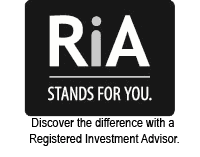For high-income earners, funding tax-free retirement accounts, like a Roth-IRA, may not be an option. Enter the mega backdoor Roth; an opportunity to fund retirement more quickly, and efficiently. You may be wondering… How does mega backdoor Roth work? Read this blog and find out!
How Does it Work: Demystifying the Mega Backdoor Roth.
To begin with, the financial advisory industry does a ‘marginal-at-best’ job of educating consumers on the numerous ‘tax qualified’ retirement savings opportunities available to them. The terms alone make it difficult to keep track, let alone knowing when, where, and how best to take advantage of each option. Think about these different retirement savings options: 401(k), Roth-401(k), Roth-IRA, deductible and nondeductible IRAs, and the backdoor Roth-IRA. Add in the mystic mega backdoor Roth-IRA and, like many, you’re likely scratching your head.
Traditional Retirement Savings Options
To properly understand how the mega backdoor Roth works, let’s review some of the more traditional tax-sheltered retirement savings options. Already knowledgeable on these? Feel free to skip to the next section.
Firstly, what do we mean by tax-sheltered savings? These are retirement savings accounts that the growth in value on a tax-deferred basis and are only taxed once qualified withdrawals are made from the account. Some accounts, like the Roth-IRA, have the dual benefit of growing tax-deferred while offering tax-free distributions for qualified withdrawals.
Most of us are likely familiar with ‘employer-sponsored’ retirement plans like the 401(k). These plans allow employees to defer income on a pre-tax basis into a tax-qualified account which then grows tax deferred until withdrawals are made later in retirement. Increasingly, employers are also offering a Roth-401(k), providing employees with the option to make after-tax contributions. Qualified withdrawals from a Roth-401(k) have the advantage of being tax-free (you can learn more in our Roth 401(k) for High Earners article).
In 2022, an individual can contribute up to $20,500 ($27,000 for those age 50+), in aggregate, to these accounts. For example, you could elect to defer $10,250 to your pre-tax 401(k) and contribute another $10,250 to your after-tax Roth-401(k). Additionally, your employer can make two types of contributions to your 401(k): matching (usually up to a percentage of your salary) and profit sharing. These matching contributions are always made to your pre-tax 401(k) account.
The IRS caps both your 401(k)-deferral amount as well the maximum combined (employee and employer) contribution. For 2022, this cap is $61,000 ($67,500 for 50+).
But fear not, you have additional saving options:
the Roth-IRA and traditional IRA.
While contribution limits to traditional and Roth-IRAs are the same ($6,000 in 2022, $7,000 for 50+) the tax implications are not. Funds in a Roth-IRA grow tax-deferred and come out tax-exempt for qualified distributions. Contributions to a Roth-IRA are limited to those with income below certain thresholds (see summary table below).
Traditional IRAs can be funded by making tax-deductible or non-deductible contributions. Making a tax-deductible traditional IRA contribution will lower your taxable income and requires that you meet certain qualifications (summarized in the table below). Anyone can make a non-deductible IRA contribution if they have the earnings to do so. You have likely heard of the ‘backdoor Roth-IRA” (not to be confused with the mega back door Roth). This strategy entails making a non-deductible traditional IRA contribution and then converting (two-step) those funds into a Roth-IRA. It applies to those whose income exceeds the limits for making a regular (one-step) Roth-IRA investment. Consult your financial advisor before executing this option, as there are important tax implications to consider before making a conversion.
Let’s summarize these more traditional retirement savings options (with 2022 limits):
| Contributions | Limit | 50+ Catch-Up | How Taxed? | Income Limits (Married Filing Joint) | |
| 401(k) | Pre-Tax | $20,500 (aggregate) | $6,500 | Tax-Deferred | None |
| Roth-401(k) | After-Tax | $20,500 (aggregate) | $6,500 | Tax-Exempt | None |
| Roth-IRA* | After-Tax | $6,000 | $1,000 | Tax-Exempt | $204,000 – $214,000 |
| Traditional IRA | |||||
| Deductible* | Pre-Tax | $6,000 | $1,000 | Tax-Deferred | 401(k) plan participant: Both spouses: $109,000 – $129,000 One spouse: $204,000 – $214,000 |
| Non-deductible* | After-Tax | $6,000 | $1,000 | Tax-Deferred | None |
Now that we’ve established a basic understanding of these more common options, let’s move on to the mystic mega backdoor Roth.
What Is It?
As the name implies, a mega backdoor Roth is a retirement savings strategy that involves moving a relatively significant amount of money into a tax-exempt account like a Roth-401(k) or Roth-IRA (more on that in the next section). Remember that a ‘backdoor Roth’ first involves contributing to a traditional IRA which is then converted to a Roth-IRA. While this strategy enables one to get up to $6,000 ($7,000 for 50+) into a Roth-IRA, the mega backdoor Roth offers an opportunity to convert up to $40,500 ($47,000 for 50+). To put that into perspective, the mega backdoor option makes for a Roth contribution that could be nearly six times that of the more traditional backdoor Roth-IRA conversion. Now you can see how this strategy enables one to quickly build a substantial tax-exempt bucket of savings for retirement.
Seem too good to be true? There are those in Congress who would agree. Late last year (Fall of 2021) Congress was considering putting an end to both the backdoor Roth-IRA and the mega backdoor Roth conversion. The legislation that would have eliminated these options was part of the Build Back Better Act and is, as of this writing, currently not likely to be passed (at least not in its current form).
How Does A Mega Backdoor ROTH Work?
First, you will need to do some research on your employer’s 401(k) plan and its features. Your employer’s plan will need to offer the following options:
- A Roth-401(k) account. About 75% of 401(k) plans today offer a Roth-401(k) option according to the Plan Sponsor Council of America.
- An after-tax 401(k) savings option, also referred to as a supplemental retirement account. Today, approximately 20% of company plans offer an after-tax 401(k), but this number continues to grow.
- The ability to perform either an ‘in-service conversion’ or ‘in-service withdrawals’.
Assuming your company’s 401(k) plan offers these features there are two ways to carry out a mega backdoor Roth conversion:
In-service Conversion (Roth-401k)
This form of a mega backdoor Roth conversion is most common as corporate 401(k) plans are more likely to offer participants the opportunity to convert funds ‘within’ a plan as opposed to withdrawing funds ‘from’ the plan. Here, you will make supplemental contributions to your after-tax 401(k) account and then convert them into your Roth-401(k). The amount that you will be able to contribute depends on your elective deferrals and your company match. For example, if you are under age 50, elect to defer the 2022 maximum ($20,500) and your company makes a $10,000 match, then you will have an additional $30,500 (the IRS contribution limit of $61,000 minus $20,500 minus $10,000) that you can contribute to your after-tax 401(k). Certainly, please keep in mind that this ‘after-tax 401(k)’ is NOT the same as your ‘after-tax Roth-401(k)’. To clarify, these accounts are treated differently from a contribution and tax perspective.
Complex concepts like the mega backdoor Roth are often best explained through an example:
For instance, Sara (age 47) makes $200,000 through her employment with Bomite Corporation. She elects to max out her deferrals for 2022 by contributing $10,250 to her pre-tax 401(k) and $10,250 to her after-tax Roth-401(k). Bomite matches Sara’s contributions dollar-for-dollar up to 3% of her salary ($6,000) AND makes a $5,000 profit-sharing contribution. This brings her total retirement plan deposits to $31,500 for the current year.
Bomite’s 401(k) plan offers employees a supplemental after-tax 401(k) account. Additionally, the plan allows employees to make immediate, in-service conversions from the after-tax 401(k) into their Roth-401(k). Sara has an additional $29,500 that she could contribute to her plan’s after-tax 401(k). That amount is derived by subtracting the $31,500 in contributions by her and her employer from the $61,000 IRS contribution limit for 2022.
Sara decides that she can afford to contribute an additional $15,000 to her after-tax 401(k). Then, she makes these additional contributions monthly and logs into her online plan account to immediately convert those funds to her Roth-401(k) account. In total, Sara has added a whopping $46,500 to her Bomite retirement plan with funds ultimately going into the following buckets:
| Sara | Bomite Match | Bomite Profit Share | Total | |
| Pre-Tax 401(k) | $10,250 | $6,000 | $5,000 | $21,250 |
| After-Tax Roth-401(k) | $25,250* | N/A | N/A | $25,250 |
| *$10,250 + $15,000 from mega backdoor Roth conversion | $46,500 |
In-service Withdrawal (Roth-IRA)
If your company’s retirement plan offers in-service withdrawals, instead of converting your after-tax 401(k) contribution into your plan’s Roth-401(k) account, you will roll the entire amount into your Roth-IRA account. Because your Roth-IRA is not part of your company’s 401(k) plan, this would be considered a withdrawal. Under these circumstances, please note that the IRS requires all funds (contributions + any earnings) be pulled out of the after-tax 401(k). If this account has accrued earnings, when you execute this rollover, those earnings will transfer into a ‘rollover IRA’ while contributions will go into your Roth-IRA. Generally, if you are executing this type of mega backdoor Roth, you would be wise to immediately rollover your after-tax 401(k) contribution to avoid the accrual of any earnings.
Who Should Consider the Mega Backdoor Roth?
The mega backdoor Roth conversion provides an opportunity to quickly build a substantial tax-exempt account for supporting your ability to eventually retire. Additionally, it is beneficial to have diverse sources of income for funding your retirement lifestyle. Building up your taxable (i.e., brokerage account), tax-deferred (i.e., 401k, rollover IRA), and tax-exempt (i.e., Roth-IRA) income buckets can aid in reducing retirement income taxes as well as the premiums you’ll be for Medicare Part B coverage. There is no shortage in benefits.
So, who should consider this option? Generally, the mega backdoor Roth applies to those who:
- Aren’t expected to ‘hit’ the IRS 401(k) contribution limit of $61,000 ($67,500 for 50+) in 2022 between their elective deferrals, company match, and any company profit sharing.
- Have the excess earnings (and cash flow) to make additional after-tax 401(k) contributions.
- Need to ‘catch up’ on funding retirement savings that will support their eventual retirement.
- Have no, or minimal, tax-exempt retirement savings (i.e., Roth-IRA).
- Are higher income earners who, generally, will need to defer more income over their work-life expectancy to replace a necessary amount of their pre-retirement earnings.
To conclude, understanding what the mega backdoor Roth is and how it works can be a great strategy for quickly building your retirement savings in a very tax-efficient manner. Be sure to check with your employer to see if this option is available to you and, if so, work with your advisor to figure out how to best take advantage!








